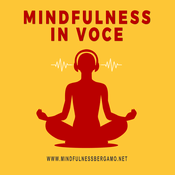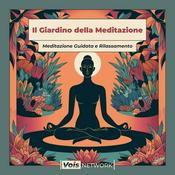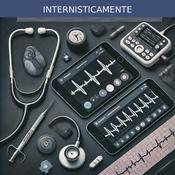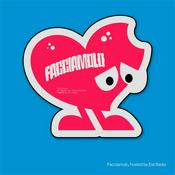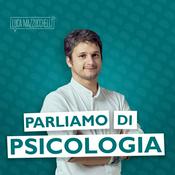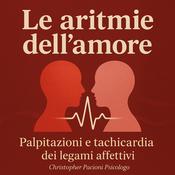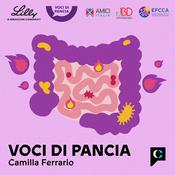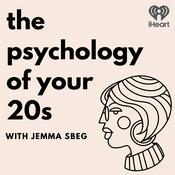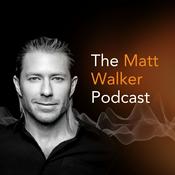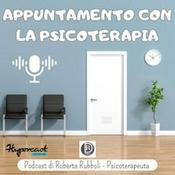323 episodi

Breaking Down Tasks and Big Feelings with Vanessa Gorelkin (Rebroadcast)
29/12/2025 | 50 min
For this week's episode, we are dipping into the archives to revisit a conversation that resonated with so many of you. I'm talking with Vanessa Gorelkin, a seasoned occupational therapist and ADHD coach who's been working in the field for nearly 30 years. Vanessa holds a Bachelor of Arts degree from Brandeis (Bran-Dice) University and a Master's degree in Occupational Therapy from NYU. She specializes in executive function strategies, emotional regulation, and anxiety management, and she brings a unique perspective to helping adults with ADHD navigate the day-to-day. In this encore presentation, we discuss: The "Want-to-Do" Gap: Why we struggle even with the tasks we actually enjoy. The Anxiety Connection: How anxiety and executive dysfunction team up to create a cycle of frustration. Strategy Decay: Why tools that work perfectly for a month inevitably seem to stop working. Practical Regulation: How to break down tasks so they feel doable and why you need a "crisis plan" before the crisis actually hits. Whether you missed this the first time around or just need a refresher on these strategies, there is so much gold in this episode. You can still find all the links and resources mentioned in this episode on the original show notes page at: HackingYourADHD.com/215 This Episode's Top Tips 1. If something feels overwhelming, try breaking it down into micro-steps. Even something like getting out of bed can be broken into "sit up," "put feet on the floor," and "stand up." In more practical ways, we could think of this as starting out as just opening the document you need to work on, adding the formatting, and starting your first sentence. The idea is you want to build momentum and go with the flow. 2. Be mindful of language; words like "just" and "should" can be damaging. Instead of "I should just wash the dishes," you can reframe it as "I could wash the dishes," and then also if you need a little bit more asking yourself, "What's making this difficult, and how can I work with it?" 3. It's important to have a crisis plan ready before you need it. When emotional overwhelm hits, it's hard to think through what you need. You can pre-plan strategies like a weighted blanket, a favorite show, or calling a friend so you don't have to figure it out at the moment.

Research Recap with Skye: The ADHD and IBS Connection
26/12/2025 | 16 min
Welcome to Hacking Your ADHD. I'm your host, William Curb. Today I'm joined by Skye Waterson for our research recap series. In this series, we dive into a single research paper to see what it says, how it was conducted, and find any practical takeaways. In this episode, we're discussing a paper called "Association between attention deficit hyperactivity disorder and intestinal disorders: A systematic review and meta-analysis." It's a fascinating one because they started with nearly 2,000 papers and narrowed it down to 11 high-quality studies. If you'd life to follow along on the show notes page you can find that at https://HackingYourADHD.com/262 https://tinyurl.com/56rvt9fr - Unconventional Organisation Affiliate link https://tinyurl.com/y835cnrk - YouTube https://www.patreon.com/HackingYourADHD - Patreon

Focused and Balanced: ADHD Strategies That Work w/ Skye Waterson (rebroadcast)
22/12/2025 | 37 min
Today, we're revisiting our conversation with Skye Waterson. Skye is a Doctoral Candidate and ADHD coach who specializes in research-backed tips for navigating life with a neurodivergent brain. We wanted to rebroadcast this episode because our discussion on her book and specifically her approach to calendars and burnout is still some of the most practical advice we've had on the show. Whether you're hearing this for the first time or the second, there is a lot of gold in here. Let's jump back into my talk with Skye Waterson. If you'd life to follow along on the show notes page you can find that at http://hackingyouradhd.com/206 https://www.unconventionalorganisation.com/ This Episode's Top Tips Avoid overcomplicating your organizational tools, and try to rely more on basic principles, such as having a capture space, a prioritization system, and a scheduling system. Aim for 80% consistency with your systems and give yourself grace to bounce back after setbacks. No one will ever follow any system perfectly, so work on choosing tools and systems that can adapt to missed days without derailing your progress entirely. Don't forget to prioritize at least a little fun in your planning. Building dopamine into your day through enjoyable activities can help you stay consistent and avoid burnout.

Our Own Worst Enemy (rebroadcast)
15/12/2025 | 14 min
This week, we're revisiting a classic episode inspired by a late '90s pop-punk anthem: "My Own Worst Enemy" by Lit. The title of that song perfectly captures a feeling common to those with ADHD. We often feel like our own greatest obstacle, plagued by an endless supply of self-destructive behaviors stemming directly from the condition. Counterproductive manifestations like poor time management, hyper-focusing on low-priority tasks, overcommitting, and procrastination can leave us feeling incredibly frustrated. We're talking about our "worst self"—the version of us that emerges in ways we later regret or that seem to actively work against our own interests. While the internet is full of advice on how to become your best self, the reality is that many of these frustrating behaviors do not reflect our value as people. Instead, they are often a reflection of our unmet needs and coping mechanisms. In this important rebroadcast, we discuss: How this "worst self" manifests in the context of ADHD. Why we should extend a bit more empathy toward these maladaptive behaviors. Practical ways to work on moving forward—not necessarily toward a flawless best self, but at least toward a better one. Tune in to explore this internal conflict and learn how to find compassion for the parts of you that struggle. Support me on Patreon Ask me a question on my Contact Page Find the show note at HackingYourADHD.com/188 This Episode's Top Tips Approach the idea of your worst self with empathy. Focus on the fact that you developed these maladaptive behaviors for a reason. Pay attention to the situations and emotions that trigger your worst behaviors to anticipate and manage them more effectively. Often, our maladaptive behaviors come out when we're not doing a good job of meeting our basic needs. If we're engaging in numbing behaviors, we can look below the symptoms to try and see what's setting them off.

Research Recap with Skye: Bullying and ADHD
12/12/2025 | 18 min
Welcome to Hacking your ADHD. I'm your host, William Curb, and I have ADHD. On this podcast, I dig into the tools, tactics, and best practices to help you work with your ADHD Brain. Today I'm joined by Skye Waterson for our research recap series. In this series, we take a look at a single research paper and dive into what the paper says, how it was conducted, and try and find any practical takeaways. In this episode, we're going to be discussing a paper called Bullying in Students with Attention Deficit Hyperactivity Disorder, analyzing Student Social Status, and Student Teacher Relationship Quality. So, a lot to talk about here, and I'm sure this is going to relate to a lot of people. If you'd life to follow along on the show notes page you can find that at https://HackingYourADHD.com/261 https://tinyurl.com/56rvt9fr - Unconventional Organisation Affiliate link https://tinyurl.com/y835cnrk - YouTube https://www.patreon.com/HackingYourADHD - Patreon
Altri podcast di Salute e benessere
Podcast di tendenza in Salute e benessere
Su Hacking Your ADHD
Ascolta Hacking Your ADHD, Dear Alice e molti altri podcast da tutto il mondo con l’applicazione di radio.it

Scarica l'app gratuita radio.it
- Salva le radio e i podcast favoriti
- Streaming via Wi-Fi o Bluetooth
- Supporta Carplay & Android Auto
- Molte altre funzioni dell'app
Scarica l'app gratuita radio.it
- Salva le radio e i podcast favoriti
- Streaming via Wi-Fi o Bluetooth
- Supporta Carplay & Android Auto
- Molte altre funzioni dell'app


Hacking Your ADHD
scarica l'app,
ascolta.


